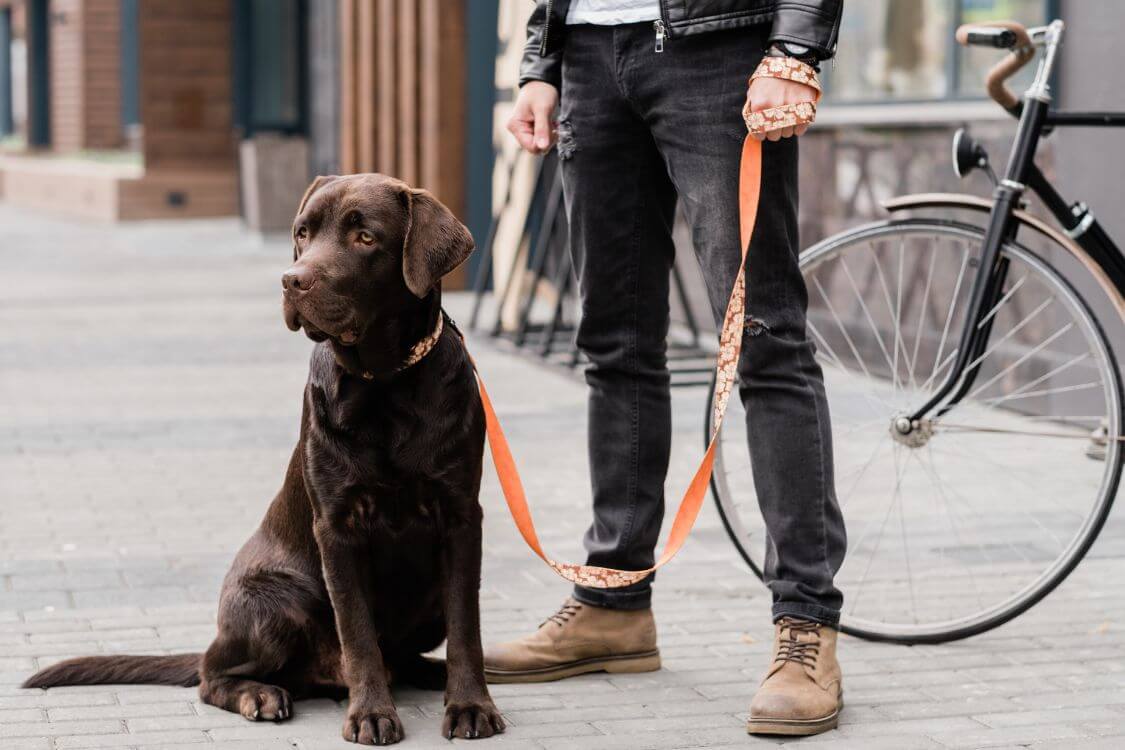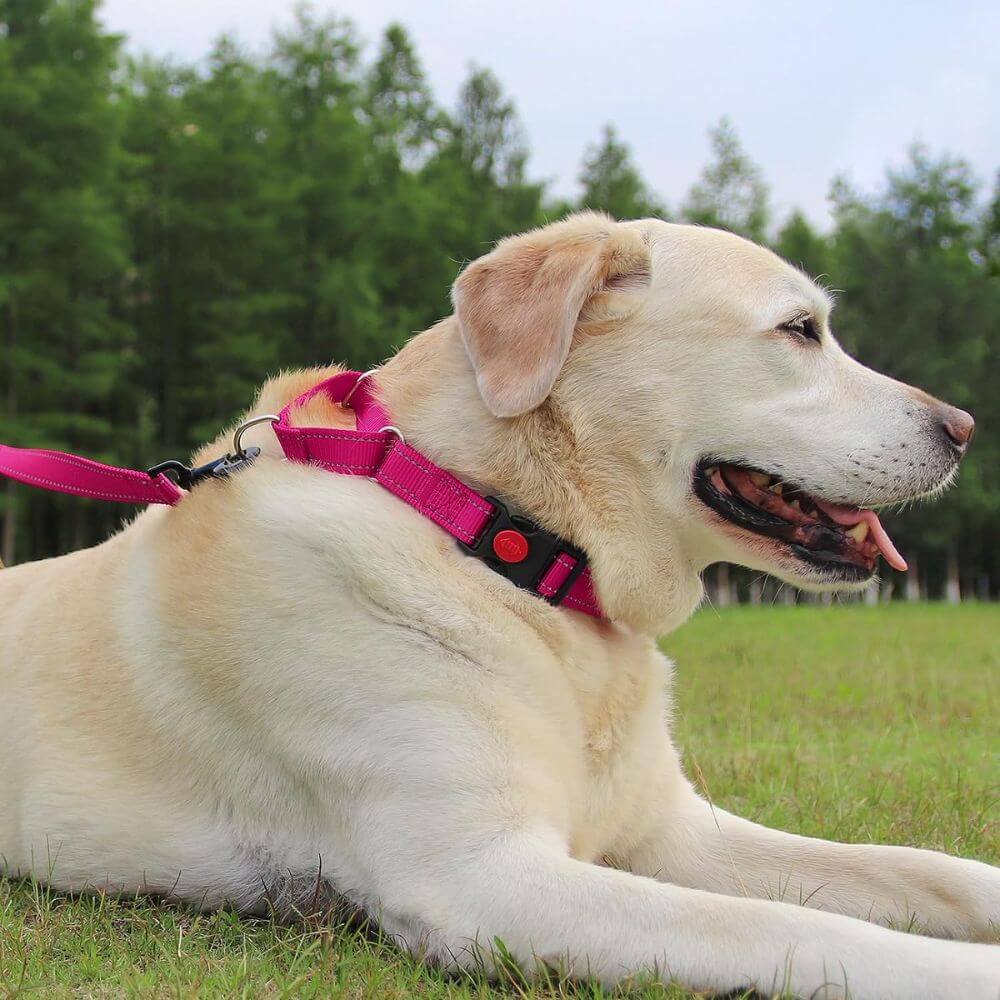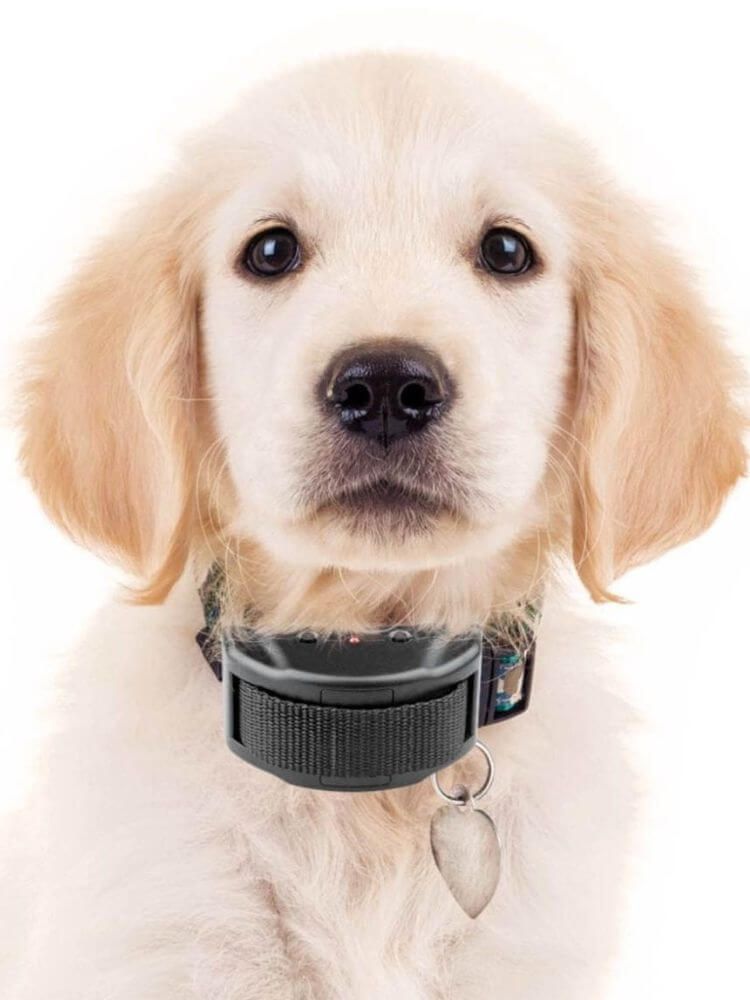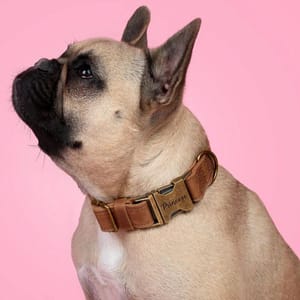Identifying the Optimal Training Collar for Dog Owners
Key Takeaways:
- Understanding the different types of training collars can help you choose the best one for your dog's needs.
- Proper fit and usage of collars are crucial to prevent injuries and ensure effective training.
- Consulting with a professional dog trainer can provide personalized advice for your dog's training collar.
Dog training is an essential aspect of pet ownership, ensuring that your furry friend is well-behaved and safe. One of the key tools in any dog owner's arsenal is the right collar for training. With a myriad of options available, it can be challenging to determine what type of collar is best for dog training. This comprehensive guide will explore the various dog collars on the market, their uses, and how to select the perfect one for your canine companion.
Understanding Dog Training Collar Types

Understanding the various types of dog training collars is crucial for anyone who owns a canine companion. Training collars are not a one-size-fits-all solution, and the type you choose can greatly impact your furry friend's learning process and overall well-being. Each collar type serves a distinct purpose and has its own set of benefits and drawbacks, making it essential to consider the nature, needs, and temperament of your dog before making a choice.
Among the array of training collar types, flat collars are the most common and widely used. These collars are generally suitable for most dogs and serve basic functions such as holding ID tags and attaching a leash. The simplicity and versatility of flat collars make them a popular choice among pet owners. However, when it comes to training, particularly with dogs that exhibit unruly or challenging behaviors, other types of collars might prove to be more effective. These collars are designed with specific training objectives in mind, offering different mechanisms and levels of control to facilitate the training process and help manage various behavioral issues. It's important to remember that the goal of any training tool should be to enhance communication and understanding between you and your pet, fostering a positive and rewarding learning experience.
The Role of the Flat Collar in Training

The flat collar is an excellent training tool for dogs that are learning basic commands and leash etiquette. Its simple design is less about providing correction and more about offering a comfortable, non-restrictive way for owners to guide their dogs. For dogs who pull or are easily distracted, combining the use of a flat collar with consistent, positive reinforcement training methods can be an effective approach. This way, the dog learns over time to associate good behavior with rewards, leading to a more natural and long-lasting obedience.
Martingale Collars for Dogs Prone to Slipping Out

Martingale collars, often known as limited slip collars, are specifically designed for dogs whose heads are smaller than their necks. This includes breeds like greyhounds and whippets, but can also be beneficial for any dog that tends to slip or back out of a traditional collar. The design of the martingale collar is unique, consisting of two loops: a larger one that fits around the dog's neck and a smaller one where the leash attaches. As the collar tightens the tension on the leash causes the smaller loop to tighten, pulling the larger loop tighter around the dog's neck.
The martingale collar isn't just about safety; it also offers training benefits. The gentle tightening sensation when a dog pulls can act as a correction, encouraging the dog to stop pulling. With consistent use and proper training techniques, the martingale collar can be an effective tool in teaching dogs good leash behavior.
Choke Collars and Their Controversy
A choke collar, also known as choke chain, have been a staple in dog training for many years. These dog collars are designed to tighten around a dog's neck when they pull on the leash or if the handler gives a correction pull. The principle behind choke collars is to provide an uncomfortable sensation, discouraging the dog from pulling and promoting better on-leash behavior.
However, choke collars and choke chains can pose significant risks if not used correctly. The tightening action can potentially cause neck injuries, especially if the dog pulls hard or if the handler gives a sharp correction. These dog collars are considered aversive by many pet owners and professional trainers.
How to use a choke chain training collar
The Use of Prong Collars or Pinch Collars
Prong collars or pinch collars, made up of a chain of metal links with blunted open ends facing inwards towards the dog's neck, are used in dog training. They create an uncomfortable sensation for the dog when it pulls too hard on its leash, serving as a deterrent against undesirable behaviors. This form of negative reinforcement conditions the dog over time to avoid such behavior.
However, prong collars should be used judiciously and under careful supervision to prevent physical harm or behavioral issues. A professional dog trainer experienced in using these devices can provide necessary guidance and instruction, ensuring the safety and comfort of the animal. Thus, while a prong collar or pinch collars can be useful in specific training contexts, they demand responsible use and professional guidance.
Training Your Dog with Prong Collar
Head Collars for Steering Unruly Dogs
Head collars, such as the head halter, work similarly to a horse's halter. When the dog pulls, the head collar moves the dog's head sideways, redirecting their attention back to the owner. It's a non-punitive way to control the dog's head and, consequently, their body.
Shock Collars: A Controversial Training Tool
Shock collars, or electronic collars, deliver an electric shock to the dog's neck to correct unwanted behavior. While they can be effective when used properly, they are controversial and can be seen as inhumane by some dog owners and experts.
Body Harnesses: An Alternative to Neck Collars

Body harnesses are an alternative to traditional collars, especially for dogs with respiratory issues or neck injuries. They fit around the dog's chest and body, distributing pressure more evenly when the dog pulls.
Reflecting on Collar Materials and Durability
When selecting a dog collar for training, it's not just the collar type that matters; the material and durability are equally important. Generally speaking, a collar made from high-quality nylon or leather can withstand the rigors of daily use and is gentle on your dog's neck. These materials are known for their strength and ability to hold up against pulling and environmental wear. Leather collars, in particular, tend to soften over time, conforming to your dog's neck for added comfort. However, they may require more maintenance to keep them in good condition compared to their nylon counterparts.
Durability is a key factor, especially for well-behaved dogs that spend a lot of time outdoors. A durable collar ensures that the leash attachment remains secure, preventing dogs from escaping and keeping them safe. Metal components, such as buckles and D-rings, should be made from stainless steel or brass to resist rust and corrosion.
For dogs that love to swim or are often exposed to wet conditions, waterproof and quick-drying materials are a practical choice. Always check the stitching and hardware of the dog's collar regularly to ensure it's in good shape and can handle the demands of training and daily activities.
The Significance of Collar Size and Adjustability

When it comes to selecting a dog's collar, size and adjustability are paramount. A collar that's too tight can cause discomfort or even injury to a dog's neck, while one that's too loose may slip off or fail to hold the dog's attention during training sessions. It's essential to measure your dog's neck accurately and choose a collar that allows for some degree of adjustment. This ensures that as your dog grows or changes in weight, the collar can be adapted to maintain a comfortable and secure fit, which is crucial for their safety and comfort.
Adjustability also plays a significant role in the effectiveness of training tools. For instance, a prong collar should be adjusted to fit snugly against the dog's neck without causing pain. Similarly, a choke collar must be sized correctly to prevent dogs from slipping out without risking injury. Regular collars used for daily wear also need to be adjustable to accommodate layers of fur or changes in a dog's size. Always prioritize a collar that offers both comfort and the ability to fine-tune its fit to your dog's unique measurements.
The Ergonomics of Dog Collars: Ensuring Your Dog's Comfort
When selecting a collar for your furry friend, considering the ergonomics is crucial for your dog's comfort. A collar that fits well will distribute pressure evenly around your dog's neck, reducing the risk of injury or discomfort. Look for collars with a soft lining and adjustable straps to ensure a snug fit without being too tight. It's important to remember that a dog's regular collar may not always be the best choice for extended training sessions, especially if it doesn't align with the natural contours of your dog's neck and head.
Moreover, the material of the collar plays a significant role in your dog's comfort. Materials that breathe well and don't retain moisture are ideal, especially for active dogs or those living in warmer climates. A collar that chafes or irritates the skin can lead to your dog trying to remove it, often by scratching or rubbing their head sideways against furniture. To prevent this, always opt for high-quality materials that are durable yet gentle on your dog's skin, ensuring that the collar is a positive part of their daily wear.
Smart Collar Choices for Effective Communication
Effective dog training hinges on clear communication, and the right collar can make all the difference in capturing your dog's attention. E-collars, when used correctly, can be a valuable tool for signaling to your dog even at a distance. These devices can emit a sound, vibration, or a mild electric stimulus to gently guide your dog's behavior. It's essential to use e-collars judiciously and under the guidance of a professional trainer to ensure your dog's safety and well-being.
In contrast, for well-behaved dogs that need minimal guidance, a simple vibration collar might be sufficient to get their attention without the need for stronger corrective measures. This type of collar can serve as an effective communication device, allowing you to signal your dog subtly and maintain their focus during training sessions. Always pair the use of any specialized collar with positive reinforcement techniques to foster a trusting relationship and encourage your dog to respond to your cues with eagerness and confidence.
Harnesses Versus Collars: Understanding the Difference

Harnesses offer an alternative to traditional neck collars and can be particularly beneficial for dogs with respiratory issues or those prone to pulling. A dog's harness fits around the dog's body and chest, redistributing pressure away from the neck. This can significantly increase a dog's comfort, especially during long walks or vigorous training sessions. Harnesses can also provide more control over a dog's movement, making them ideal for puppies or highly energetic dogs that may get distracted easily.
While harnesses are excellent for managing your dog's movements and ensuring their safety, they may not be suitable for all training purposes. For instance, a head collar, which operates similarly to a horse's halter, is designed to direct a dog's head sideways, allowing for better control of the dog's muzzle and, consequently, their attention. E-collars, on the other hand, can be used to correct behavior from a distance. The choice between a harness and a collar will depend on your dog's specific needs, behavior, and the training goals you have set. Always consider well-behaved dogs as a benchmark for how these training tools should ultimately influence your dog's behavior.
Customizing Collar Functionality for Training Success
The functionality of a dog's collar can greatly influence the success of training sessions. For instance, a martingale collar, also known as a limited slip collar, provides as much control without the choking effect of a choke chain. It's designed to tighten just enough to gain a dog's attention without causing discomfort, making it ideal for teaching dogs not to pull on the leash. On the other hand, an electronic collar, or e-collar, can offer varying levels of stimulation to redirect a dog's focus. These collars are often used for distance training or for managing challenging behaviors.
Another aspect to consider is the placement of the leash attachment. Collars with a front attachment point, typically found on a dog's chest, can discourage pulling by gently steering the dog's body sideways, similar to how a horse's halter works. This can be particularly useful for strong dogs that tend to lead during walks. Conversely, a standard collar with a back attachment allows for more traditional heel training. It's essential to match the collar's functionality with the training goals and to ensure that the collar fits well, avoiding any potential for slipping off or causing discomfort to the dog's neck or head.
The Importance of Proper Dog Collar Fit
Regardless of the type of dog collar you choose, ensuring it is properly fitted is crucial for your dog's comfort and safety. A collar that is too tight can cause pain and injury, while a collar that is too loose can slip off or fail to provide the necessary control.
Training Collars and Dog's Safety
When selecting a training collar, the dog's safety should always be a top priority. Collars that cause pain or discomfort can lead to fear and aggression, which is counterproductive to training efforts.
Not a Substitute for Proper Training
It's important to remember that training collars are tools, not a substitute for consistent training methods. They should be used in conjunction with positive reinforcement techniques to encourage desired behavior.
Consulting a Professional Dog Trainer
Before introducing a training collar, it's advisable to consult with a professional dog trainer. They can assess your dog's behavior, suggest the most appropriate collar, and guide you on proper usage.
Training Collars for Special Cases
For dogs with special needs, such as a deaf dog, different collars like vibrating collars can be used to get the dog's attention without relying on sound.
Collars for Large Dogs and Small Dogs
The size and strength of your dog can influence the type of collar that's best for training. Large dogs may require sturdier collars, while small dogs need collars that are lightweight and less restrictive.
Socializing Dogs with Collars
When socializing your dog with other dogs, the right collar can help maintain control and prevent unwanted behavior. It's essential to choose a collar that allows you to manage your dog effectively in social situations.
Transitioning from Training Collars
Once your dog has learned the desired behaviors, you may want to transition them back to their regular collar. This process should be gradual and monitored to ensure that the training sticks.
Summary
Choosing the right collar for dog training is a critical decision that can significantly impact the effectiveness of your training efforts. From flat collars to more specialized training collars, each type has its own set of benefits and considerations. Proper fit, usage, and the dog's safety are paramount when selecting a collar. Remember, collars are tools to aid in training and should be used responsibly and in conjunction with positive training methods. Consulting with a professional dog trainer can provide valuable insights tailored to your dog's specific needs.
Dog Collar Training FAQ's
Q: Can choke collars cause injury to my dog? A: Yes, choke collars can cause neck injuries if not used correctly. They should only be used under the guidance of a professional dog trainer and with great care.
Q: Are shock collars safe to use for training dogs? A: Shock collars can be safe when used properly, but they are controversial and considered inhumane by some. It's essential to consult with a professional dog trainer before using a shock collar.
Q: How do I know if a training collar is fitted properly? A: A properly fitted collar should allow you to slip two fingers between the collar and your dog's neck. It should be snug without causing discomfort or pain.
Best of luck training your dog!
J
Related Reads:

The Best Training Collar for Stubborn Dogs in 2024





